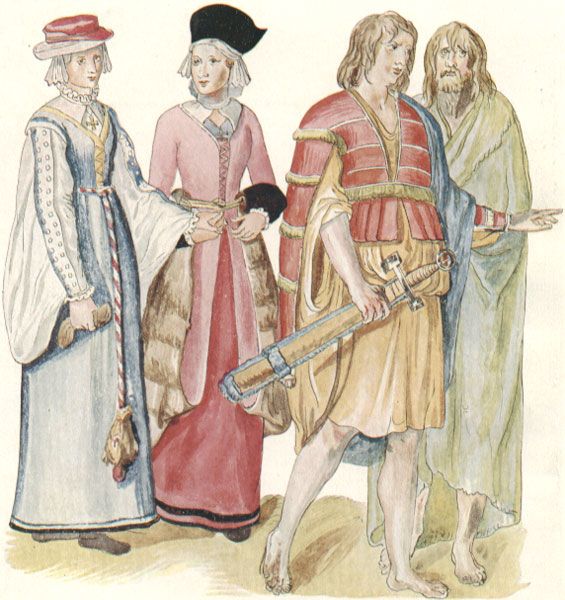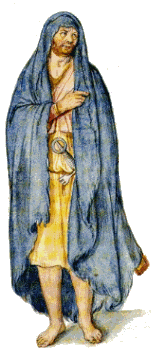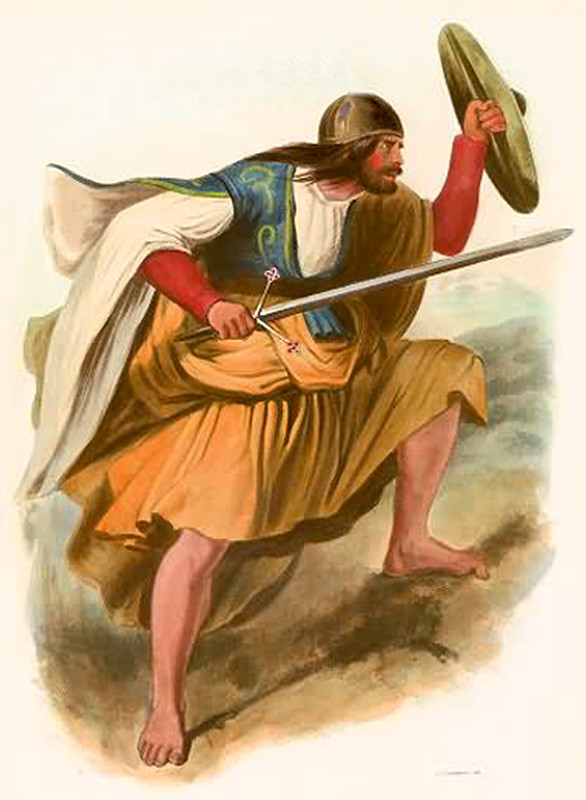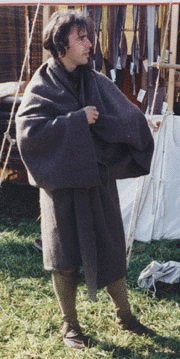|
-
25th September 19, 01:29 PM
#11
One of the things that always seem to trip us up is terminology.
For example - The Leine is not a kilt. It is a different garment. Much more like a large, long, loose shirt with long sleeves.
Here is an excerpt from an illustration dated 1570 by de Heere showing an Irish Leine.

The Leine is often refereed to as being dyed a yellow, saffron color.
Over the top of the Leine is worn a Brat which can be seen in another de Heere but dated 1575.

Further confusion comes from some confusion between the Irish Leine and the Leine Croich as shown in the later (1845-47) illustrations from R.R. McIan's "The Clans and Tartans of Scotland" and listed as Ferguson. This is reputed to show, not a kilt but the war coat from the early 17th century.

And another from McIan. This time labeled as showing MacArthurs.

While some do claim that these illustrations show a feileadh mor, or Belted Plaid, I think most can tell that these are different garments.
-
-
25th September 19, 05:19 PM
#12
Steve has put his finger right on it.
There was, as far as we know, a shared Irish and Scottish costume consisting of brat, leine, crios, and ionar.
The brat, usually called "mantle" by English observers, or a "shaggy rug", evolved into a cloak in Ireland.
But in Scotland there developed a fashion of wrapping the brat around the waist and securing it with a belt.
I have a brat that I made nearly 30 years ago, of heavy tweed with a slightly tartan-like pattern, and edged in fur, which represented a missing link of sorts between the Irish cloak and the Scottish kilt.
In any case the Elizabethan invasion of Ireland put an end to the traditional Irish brat and leine costume, so that the Scottish version was the only one to survive into modern times.
The weaving and wearing of the crios, and the making and wearing of the pamputai, survives in Ireland to this day, on the Aran Islands.
The weaving of the crios
https://www.youtube.com/watch?v=43R8no-9hG0
Pamputai

cf. the Opanki of the Balkans

Last edited by OC Richard; 25th September 19 at 05:30 PM.
Proud Mountaineer from the Highlands of West Virginia; son of the Revolution and Civil War; first Europeans on the Guyandotte
-
The Following User Says 'Aye' to OC Richard For This Useful Post:
-
25th September 19, 05:57 PM
#13
The Brat is about like, (size and weight) of an Army Blanket. Worn over the shoulders to keep you warm. Can be pulled over the head to keep the rain off and the length can be adjusted up or down to suit the weather.

Perhaps one of the most universal, non-tailored garments the world over.



Last edited by Steve Ashton; 25th September 19 at 06:01 PM.
-
The Following User Says 'Aye' to Steve Ashton For This Useful Post:
-
25th September 19, 06:32 PM
#14
-
The Following User Says 'Aye' to OC Richard For This Useful Post:
 Posting Permissions
Posting Permissions
- You may not post new threads
- You may not post replies
- You may not post attachments
- You may not edit your posts
-
Forum Rules
|
|






























Bookmarks